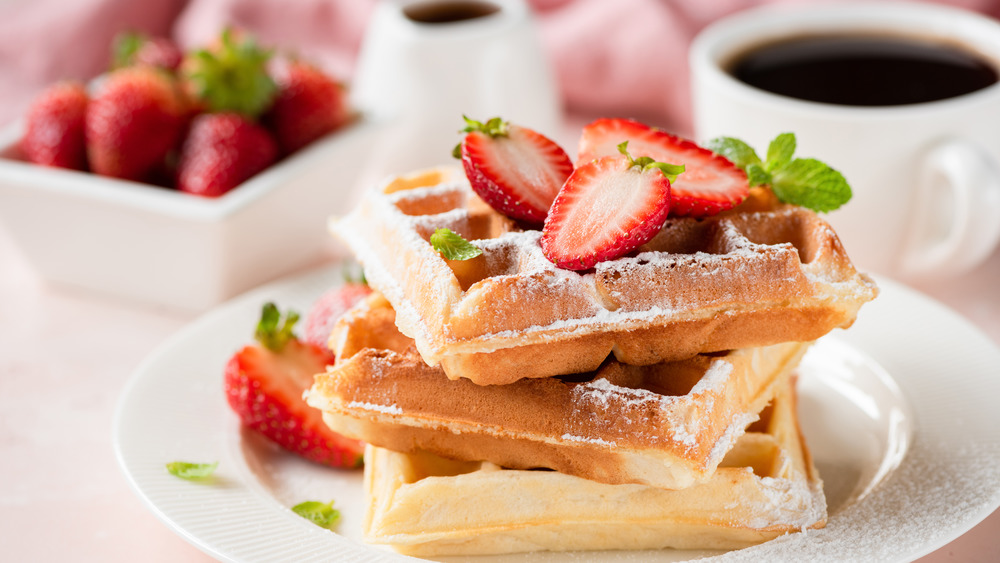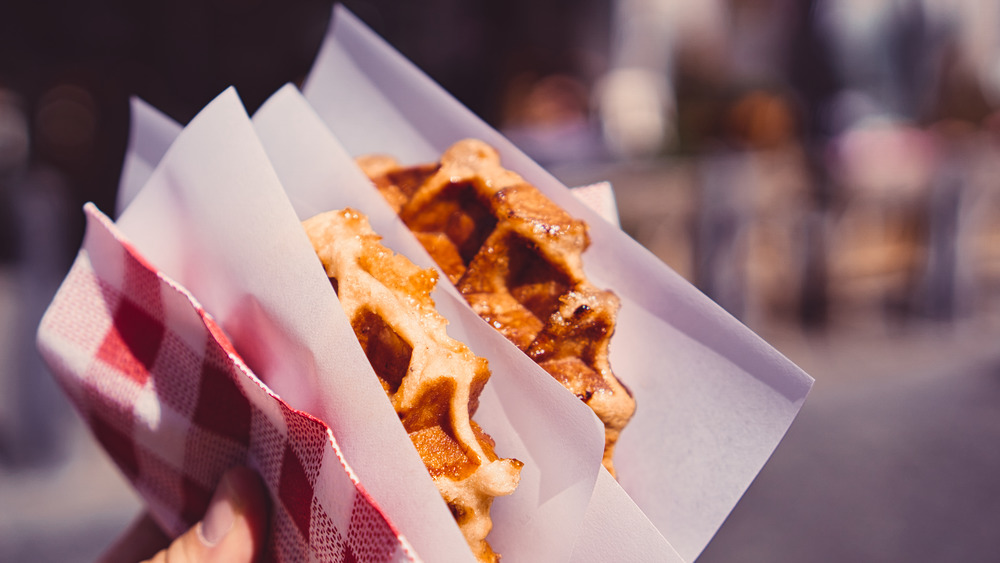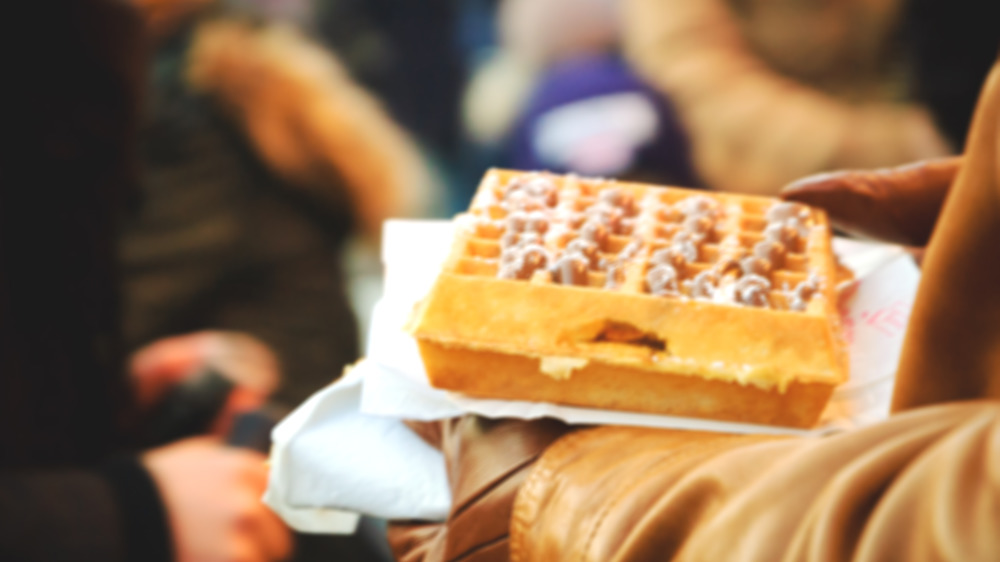The Untold Truth Of Belgian Waffles
The great pancake versus waffle debate is one thing, but factor in Belgian waffles, and there's only one right answer – let's be honest. But how much do you really know about the history of this classic street food?
Belgian waffles were first introduced to the United States in 1962 (via Forktrails), but waffles were a hit in Europe long before. According to The Culture Trip, the treat was so popular in the 19th century that locals added booths onto their homes to bake away and cash in on the booming industry.
As with many great foods and delicacies, New York was the lucky city to welcome Belgian waffles onto the scene. Maurice Vermersch introduced the treat in Seattle in 1962, but it didn't gain popularity until it was featured at the 1964 World's Fair in New York. At the time, most Americans couldn't point out Belgium on a map, but people were instantly smitten with the Belgian waffle, thanks to its airy texture and perfect level of sweetness.
There's actually more than one kind of Belgian waffle
Believe it or not, the term Belgian waffle is actually a blanket term – there are actually two different kinds! Forktrails explains that many Americans immediately generalized the waffle introduced at the fair, and it was easier to go along with it than remedy the name mix-up amid the waffle's growing popularity, especially since most Americans were unfamiliar with the country, to begin with.
What most people consider the Belgian waffle is actually called the Brussels waffle. It's crispy on the outside and warm and fluffy on the inside, with unmistakable deep pockets imprinted from a waffle iron. According to Back Roads, the Brussels waffle is typically a rectangular shape with no more than 24 squares on its golden surface.
The lesser-known Belgian waffle, called the Liege waffle, hails from a city in the Wallonia region. It's extra sweet due to the incorporation of pearl sugar in the dough, which causes the crust to caramelize and leaves the inside dense and brioche-like. Since you can't make a Liege waffle without (expensive) pearl sugar and a bit of extra effort, they're often ignored for their Brussels counterpart (via HuffPost). Back Roads says that the most discernible trait between the two is its shape – you'll know a Liege waffle from a Brussels waffle on sight, thanks to its sugared, rounded corners.
No matter which kind of Belgian waffle, there's a very specific waffle etiquette to follow
In Chicago, there's hot dog etiquette. In Italy, there's coffee etiquette. And in Belgium – or anywhere else that sells the country's staple sweet – there's waffle etiquette.
First thing's first: A true Belgian waffle is not meant to be drowned in toppings. As a matter of fact, the waffle itself is intended to be the main course and the primary source of sweetness. If you order a Belgian waffle at IHOP, then you'll likely have your choice of any topping in the world. But if you order a Belgian waffle from a vendor in Europe, get it the classic way: completely plain or topped with fresh strawberries and a dollop of whipped cream. Either way, be sure there's not a drizzle of syrup in sight (via HuffPost).
Whether it's a Liege or a Brussels, never eat a Belgian waffle with a fork and knife. In an interview with the podcast The Sporkful, Steve Lipschutz, general manager of Wafels and Dinges in New York, and MariePaule Vermersch, daughter of Maurice Vermersh, explain that you have to become "one with the waffle" by eating it on the go without any cutlery. The two liken eating a Belgian waffle with a fork to eating a hot dog with a fork – you just don't do it.


